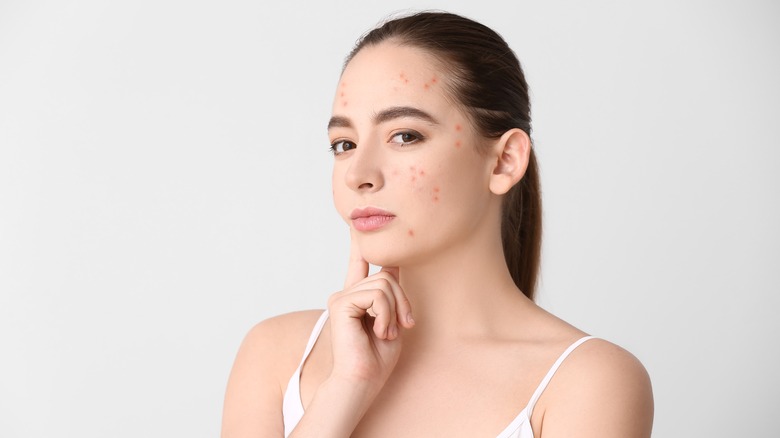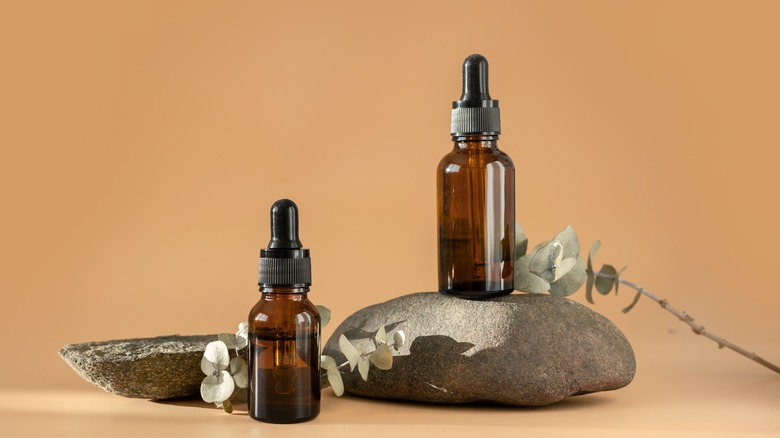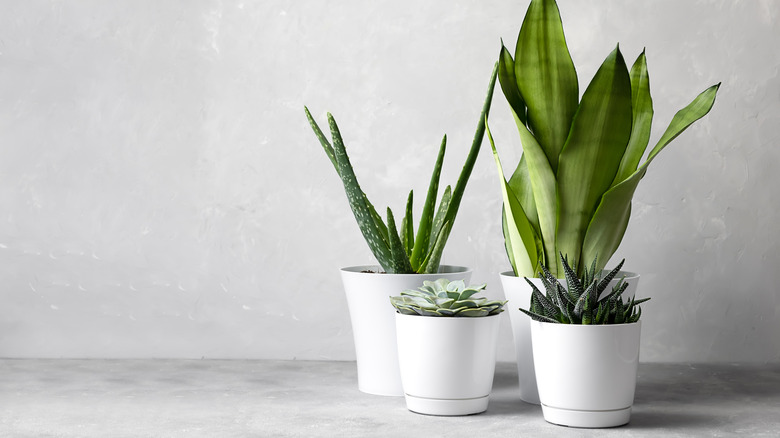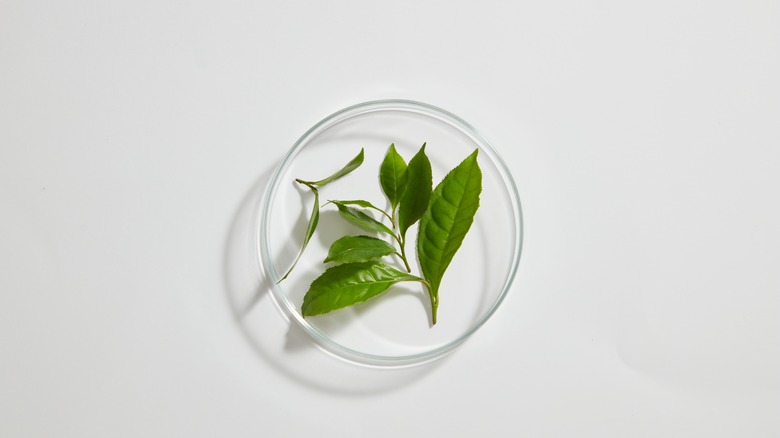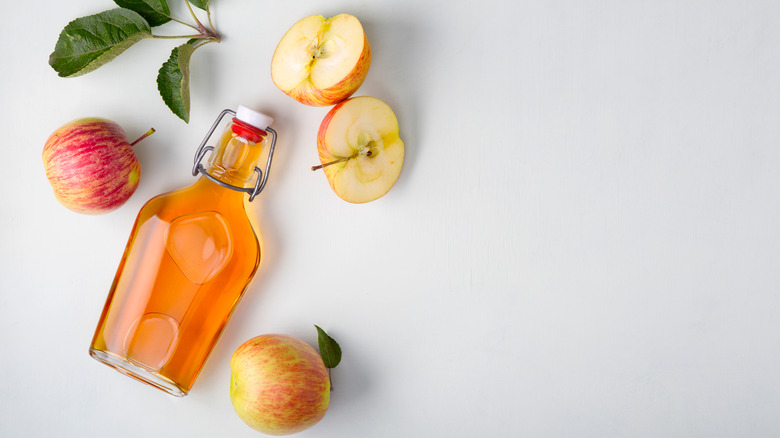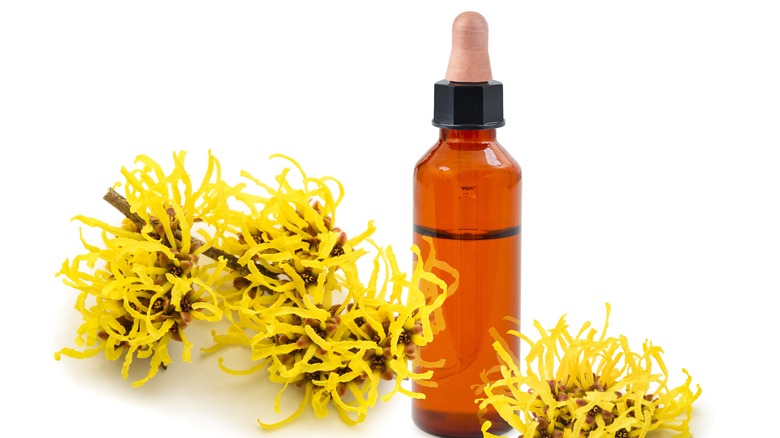Natural Ways To Clear Acne Fast
In the United States, acne is the most common skin disorder among teenagers and young adults, affecting 50 million people annually (via the American Academy of Dermatology Association).
According to the Cleveland Clinic, the condition is caused when the skin pores become blocked by hair, sebum, dead skin cells, and bacteria. Some common acne types include blackheads, whiteheads, papules, nodules, cysts, and pustules (via WebMD). Although it's more obvious on the face, other common breakout spots are the chest, shoulders, and back, says WebMD.
You may become susceptible to acne due to hormonal changes, especially during puberty (via Mayo Clinic). However, other risk factors include stress, diet, and medication.
Besides the obvious symptoms, acne can affect people emotionally, leading to low self-esteem and an increased risk for anxiety and depression, according to a 2017 study published in the journal Clinical, Cosmetic and Investigational Dermatology.
Luckily, various acne treatment options exist, and many people prefer natural ways to clear acne fast.
Tea tree oil
Tea tree oil is a common acne remedy that can be added to toners, body washes, and soaps. It's extracted from a small native Australasian tree called Melaleuca alternifolia.
According to a 2019 study published in the Journal of Drug Delivery and Therapeutics, the terpinen-4-ol in tea tree oil offers antifungal, anti-inflammatory, antibacterial, antioxidant, and anti-tumoral properties. In a 2018 study published in the journal Clinical Pharmacology: Advances and Applications, a cream containing 3% tea tree oil decreased acne lesions when applied for 15-30 days. This highlights tea tree oil's effectiveness in addressing mild to moderate acne. Tea tree oil's efficacy also makes it a promising substitute for antibiotics, as suggested in another 2017 study published in the Australasian Journal of Dermatology.
Although effective, knowing how to apply tea tree oil is vital. Most importantly, you should never apply it directly on skin undiluted, says Healthline. The source recommends mixing 9 parts water with 1 part tea tree oil. When applying to your skin, it would be best to use a cotton swab. Dip it into the mixture and apply it to your skin, repeating once or twice daily.
Aloe vera
A 2008 study published in the Indian Journal of Dermatology describes aloe vera as a shrubby, xerophytic, and pea-green-colored plant belonging to the Asphodelaceae (Liliaceae) family. The name originates from the Arabic word "alloeh," which means "shining bitter substance," and the Latin word "vera," which means "true."
The plant's use for dermatology dates over millennia, and a huge part of aloe vera's skincare benefits rely on its anatomy. According to MedicalNewsToday, aloe vera contains amino acids, sugar molecules, and zinc, all essential for moisturizing and protecting the skin against dryness. These nutrients also contribute to the plant's anti-inflammatory and antibiotic properties, which may help reduce acne scars.
A 2021 study published in the journal Frontiers in Medicine also supports aloe vera's ability to treat acne lesions. The study attributes this to the plant's antioxidative and anti-pigmentation properties. According to the study, aloe vera has certain polysaccharide components that work as immunosuppressive agents to reduce the adhesion of leukocytes and the level of TNF-α. The study recommends combining aloe vera with ultrasound and a soft mask for a therapeutic effect. Healthline recommends scraping the gel with a spoon and applying it directly to your skin once or twice daily as a moisturizer. Be sure to clean your skin before application.
Green tea
The medicinal benefits of green tea have been well-known for some time. According to Healthline, green tea contains a polyphenolic compound called epigallocatechin-3-gallate, or EGCG, which offers various therapeutic effects. This compound also gives green tea its antioxidant and anti-inflammatory properties, which treat acne. Green tea extracts might also reduce the number of inflammatory lesions due to their therapeutic properties, per a 2021 study published in the journal Phytotherapy Research.
Since acne stems from various causes, the treatment prescribed will depend on the factors causing your skin to break out. For some people, excess sebum production might be caused by the limited supply of antioxidants needed to break down cell-damaging chemicals and waste products, according to MedicalNewsToday. For such people, green tea, which is rich in antioxidants known as catechins, may effectively reduce the skin's sebum production, acne, and inflammation. According to the source, you can drink green tea or put the teabags directly on your skin to help address your acne.
Apple cider vinegar
Apple cider vinegar is a by-product of apple cider after fermentation. According to Healthline, the fermentation process often includes yeast and helpful bacteria, which creates a compound called acetic acid. This acid gives apple cider vinegar its antibacterial and antifungal properties, which can benefit the skin by inhibiting bacterial growth and destroying acne-causing agents like bacterial biofilms.
Apple cider vinegar can also be used as a chemical peel. A 2017 review published in the journal Clinics in Dermatology confirms chemical peeling to be a widely used and effective acne treatment method. According to the review, using chemical peels can limit epidermal destruction, leading to increased skin exfoliation and removal of skin lesions.
Although the benefits are clear, it's crucial to use apple cider vinegar in moderation. MedicalNewsToday warns against applying it undiluted on the skin due to its high acid content, which can cause irritation and dryness. According to the source, you can apply the diluted solution directly to acne spots before rinsing.
Witch hazel
The U.S. Food & Drug Administration (FDA) approved witch hazel as a topical over-the-counter drug due to its ability to remedy various skin conditions. Witch Hazel is a natural liquid extract from the North American witch hazel plant, also known as the Hamamelis virginiana shrub (via North Carolina State University.
The plant's water is touted for its anti-acne effects. According to a 2017 study published in the journal Clinical, Cosmetic and Investigational Dermatology, witch hazel water can help reduce acne lesions. Using witch hazel as part of a consistent topical skincare regimen also reduces red and inflamed skin, improving the skin's overall appearance, per the study.
According to MedicalNewsToday, witch hazel extract can help rid the skin of excess oil and sebum. Besides absorbing oil on the skin, the tannins and antioxidants in the plant can act as a disinfectant, making it difficult for bacteria to thrive on the skin.
To create an effective witch hazel concentration for your acne, Healthline advises adding a cup of water to a tablespoon of witch hazel bark. Let it soak for about 30 minutes before boiling the mixture. Once heated, allow it to simmer for about 10 minutes. Once done, strain the mixture and transfer it into a sealed container for storage. When using, use a cotton ball to apply directly on the skin once or twice daily.

